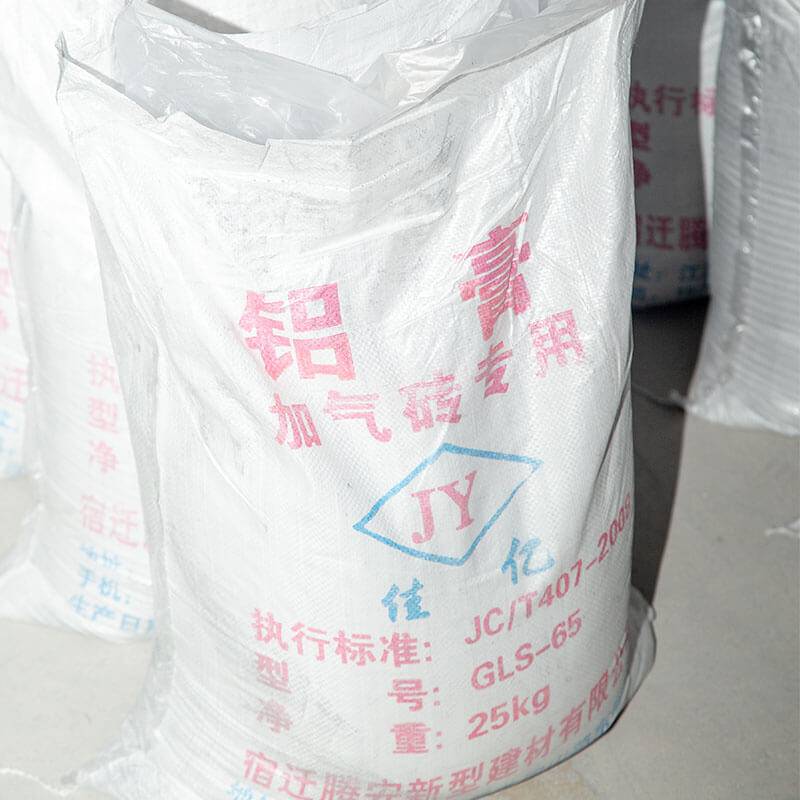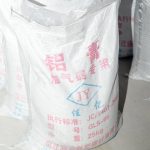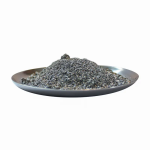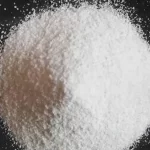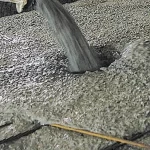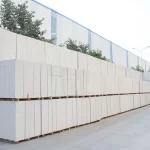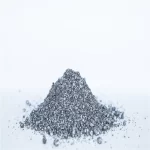
The Influence Of Aluminum Powder On Aerated Concrete
The Influence Of Aluminum Powder On Aerated Concrete
The air generation rate of aluminum powder affects the consumption of aluminum powder by aerated concrete. Taking aerated bricks as an example, when the gas generation rate of aluminum powder reaches 90%, the unit consumption is 0.5 kg/m3; when the gas generation rate of aluminum powder reaches 84%, the unit consumption is 0.53 kg/m3.
The air generation speed of aluminum powder is affected by the quality of aluminum powder and the alkalinity of concrete. Because the alkalinity of concrete is too large, it will reduce the strength of the aerated concrete material. Therefore, it is generally controlled by controlling the alkalinity of the concrete and adjusting the quality of the aluminum powder. Ensure the inherent quality of aerated concrete materials. Aluminium powder generates gas too fast, resulting in reduced gas utilization, uneven pores of the aerated concrete material, or insufficient concrete expansion height in the later stage; too slow gas generation speed can lead to mold collapse or exhaust cracking. The gas generation speed of aluminum powder should match the setting speed of concrete. According to the usage of most manufacturers, when ordinary 425# Portland cement is used, the gas generation of aluminum powder should generally be controlled within 16-20 minutes.
Fineness is an important physical index of aluminum powder, which directly affects the rate of gas evolution, which in turn affects the inherent quality of aerated concrete. As the particle size of the aluminum powder increases, the gas generation rate increases, and the gas generation time is prolonged, which will cause later tail gas cracking. If the aluminum powder particle size is too small, the gas generation speed will be very fast, the gas generation time will be shortened, and the utilization rate of the emitted gas will be reduced. , Unit consumption is increased.
The bulk density is the apparent expression of the diameter-to-thickness ratio of aluminum powder. Together with the particle size, it controls the particle size and shape of the aluminum powder. This index affects the gas generation speed curve of the aluminum powder, and then affects the internal quality of the aerated concrete material. The higher the loose density, the closer the particle size of the aluminum powder is to the spherical shape, the smoother the gas generation speed curve, and the longer the gas generation time, which may cause collapse or exhaust cracking in severe cases; the lower the loose density, the better the particle size and shape of the aluminum powder. It is scaly, and the gas generation curve is steeper, and the gas generation time is shorter. In severe cases, the gas block height is insufficient. Most manufacturers accept aluminum powder with a bulk density of 0.14~0.2g/cm3.
After years of discussion and practice, it can be determined that the performance of aluminum powder for aerated concrete should meet the following indicators: Gas generation rate ≥85%; Gas generation time within 6-20 minutes, gas generation volume 73-76mL; loose density controlled within 0.14~0.2g/cm3; The particle size is controlled at d50=25~55 μm.

